Following my previous column, The Four Pillars of Horsemanship, I have also been asked to explain in more detail the principle behind making our idea our horse’s idea.
I touched on this in the first pillar — communication. The art of communication is delivered to the horse through the release of pressure. Understanding this is the key behind creating a willing partner. It comes from how we apply the release of pressure to the horse. I think of this as getting the point of balance on the right side of the manoeuvre.
In The Four Pillars of Horsemanship, I made a joke that wives make the best horse trainers in the world. Many of you have asked why I believe this to be true. Well, I speak from my own observation and experience. Wives have an uncanny way of training their husbands without their husbands realising that they are being trained. I told this revelation of mine at a clinic one time, where two of the participants happened to be husband and wife. The husband was standing in the foreground with his wife standing behind him. He blurted out, “Not me, I can’t be trained!” I used to say the same thing, once upon a time. I quickly responded, “Your wife must be the best horse trainer here!”
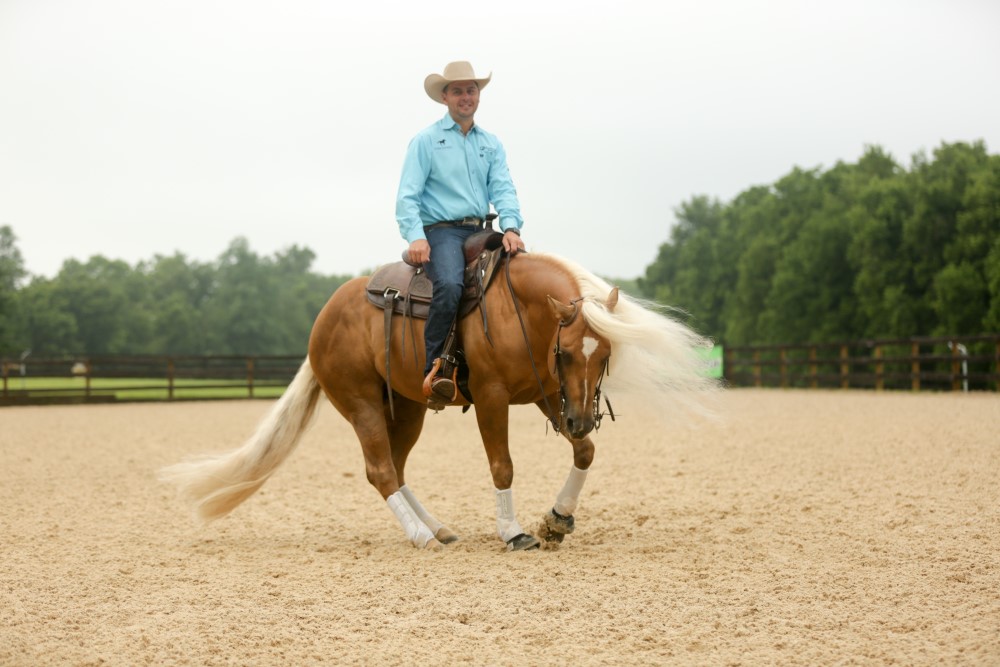
I then asked him if he would do anything willingly now that he might not have done when he first married. While he looked blankly back at me, I could see his brain ticking over, thinking hard about my question, while his wife was smiling so hard she looked like she was doing her very best not to burst out laughing. I don’t think I will forget the look on his face when he realised he had been trained without him knowing. He went very quiet after that.
As a horseman, I strive to create a willing partnership between horse and human. You might be thinking that’s all good, but how do we make our idea our horse’s? The short answer is connecting the horse mentally to a manoeuvre, not just physically.
HORSE IN CONTROL
Getting our horses connected mentally requires the horse to feel in control of the release of pressure. When working with horses, we strive to control them 100% of the time, which we know is not always possible, but what is possible is controlling the release of pressure 100% of the time. But as much as we are trying to control the release of pressure, the horse is trying to create it. This is how horses learn evasions. The best example I can give is a rearing horse. A horse learns to rear as an evasion in the same way I teach an entertainment horse to rear as a trick; the only difference is, one is controlled by a cue and the other is not. This might answer why horses can learn evasions faster than we can teach our horses a desired skill or manoeuvre.
If we break this down and see it from the horse’s perspective, he gets the reward he is looking for in the rearing evasion by the rider releasing all the pressure of the aids, therefore the horse finds his release and connects the manoeuvre of rearing to the pressure. So my aim as a horseman is to allow the horse to feel in control of the release of pressure within the manoeuvres I set out to teach him. A common mistake we make is thinking we are doing this by operating under less pressure than if we applied the same amount of pressure when the horse isn’t performing the desired manoeuvre. A way to look at this is if we asked our horse to perform lateral flexion on the ground, where the horse stands with all four feet still while he flexes his head and neck around to his body; we apply pressure to the halter to flex the horse and we hold the pressure while the horse flexes.
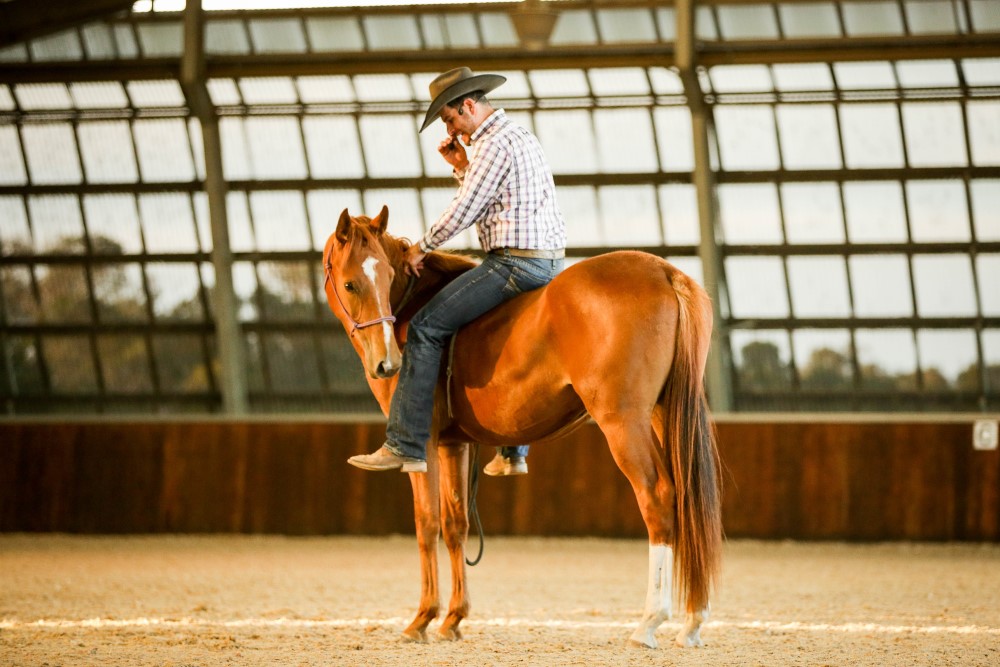
Once the horse finishes the manoeuvre we release the rein and the horse straightens his head and neck, but if the horse resists we apply more pressure until they conform. This creates obedience but not willingness. From the horse’s perspective he sees the goal to straighten his head as that’s when he gets a full release of pressure, so to him that’s the best of the three options. To correct the point of balance we should apply pressure to the rein when the horse is straight, or straightening his head and neck and release contact when he is flexing his head and neck. This allows the horse to feel in control of the release within the manoeuvre and therefor he connects to the exercise. Now, if we look at that from the horse’s perspective, it’s like the horse is saying: “Look at this, if I bend my head and neck around, I can get my human to let go of the rein.”
POINT OF BALANCE
I will give you some examples of creating mental connection by having the point of balance on the correct side. For me, I love working cow horses, as this is a really easy example of mental connection. I need a cow horse to connect to the cow by seeing the cow as the release of pressure, not the cause of pressure. As a cow horse trainer, my job is to introduce the concept to the horse and leave the horse alone when he is working the cow correctly.
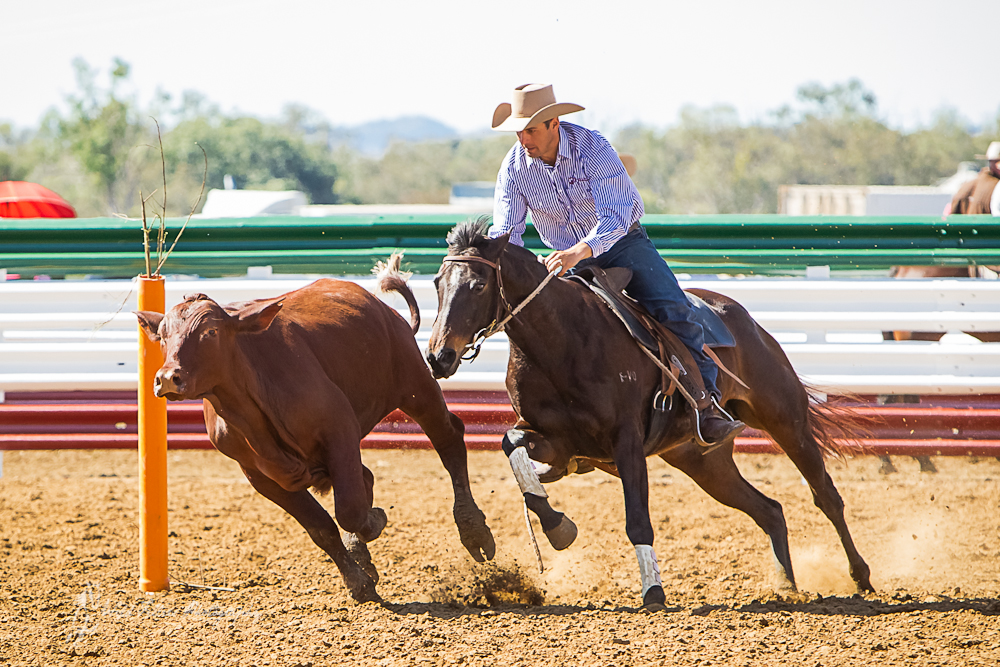
Another good example is show jumping. The horse needs to see the jump as the release of pressure, and in doing this we create a horse who will seek out jumps, as he is seeking out his own release of pressure. Often riders tend to put more pressure on the horse as he approaches the jump, through lack of confidence or in the hope they are encouraging him to take the jump. In the horse’s eyes in this scenario, he is running into pressure. This isn’t where he wants to be. If the horse sees the jumps as the cause of pressure he may try to evade by running off. But the horse who tries to pull through the bridle to get to the jump is craving the release of pressure, which his rider has taught him will come as his feet leave the ground to jump.
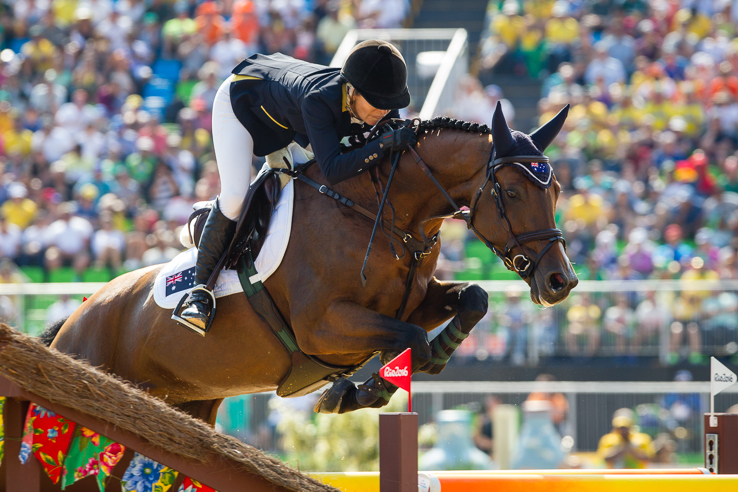
The last example I will give you is teaching a horse to lay down on cue. We set the horse up by connecting him to his natural lay-down process. This entails lowering his head, collecting the horse and bowing on both front legs. Every time we activate these series of cues, the horse naturally starts to think about laying down, and as we see this connection made we release the aids, creating a marker for the horse to seek out his own pressure control. This is like playing the childhood game “hot and cold”, in the sense that when the horse is thinking about the lay down, we are saying “You’re getting warmer”, and when the horse isn’t thinking about the lay down, we are saying, “Mate, you’re getting pretty cold!”. This allows the horse to find the release of pressure in the lay down and connect to the manoeuvre mentally and willingly because, most importantly, the horse is in control of the release of pressure.
CONCLUSION
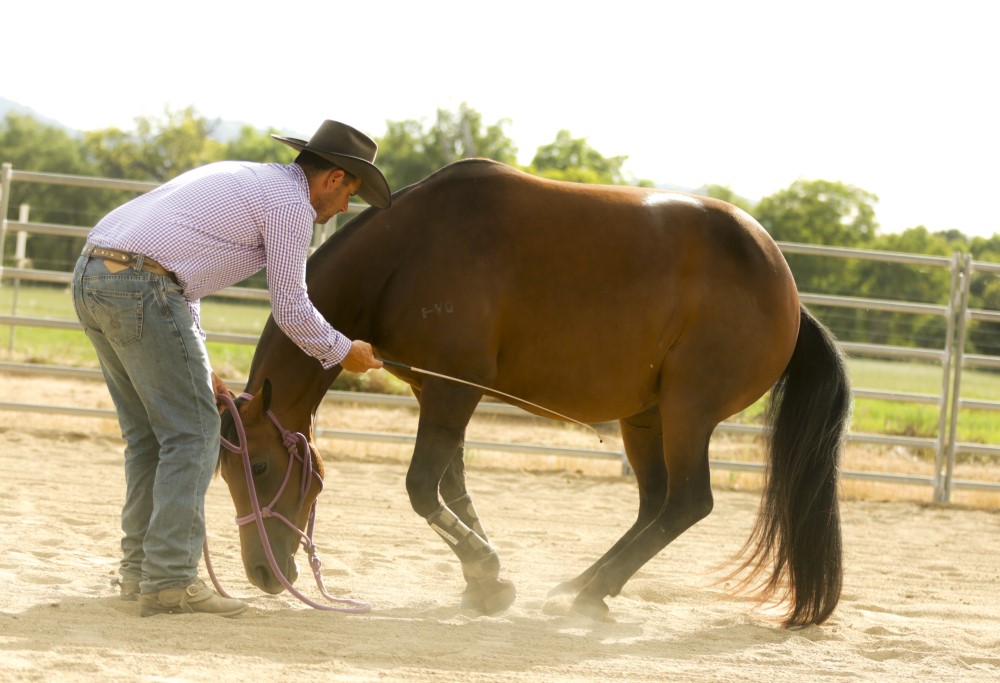
I can give you tons of examples of connecting the horse mentally to the manoeuvres, but I am going to challenge you to set a goal of teaching and or correcting a manoeuvre that has already been taught and see if you can get a mental connection to that manoeuvre and create willingness in your horse. See how much he tries to do it for you, and how little it takes. Play with how quickly you can remove the cue yet have the horse continue to complete the manoeuvre you’ve asked for. Once you have succeeded with this, find ways to release as much pressure in all your manoeuvres. This will ensure you are creating a willing partner regardless of your equestrian discipline.
Dan Steers is one of five expert presenters appearing at Mastery of the Horse (14 -16 June 2024). You can find out more about the event here. EQ
This article first appeared in Equestrian Life’s January/February 2018 issue.

